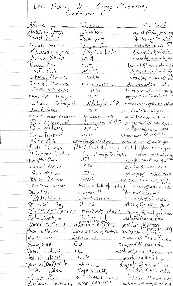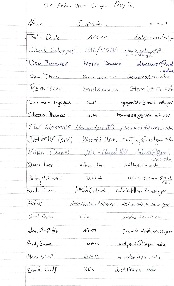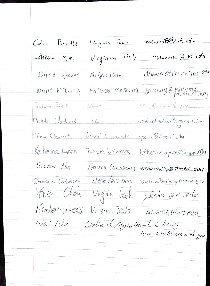...
National Library of Medicine
Bethesda, MD
Arriving by metro
| Expand |
|---|
The NIH campus is very accessible via Metro. Take the Red Line towards Shady Grove to the Medical Center station. The station’s escalators come out on the NIH campus. You’ll then need to get a visitor badge from the NIH Visitor Gateway Center , which will be facing you as you come up the Metro escalator. You will be required to show one form of identification (a government-issued photo ID-driver's license, passport, green card, etc.) and to state the purpose of your visit. On exit from the Gateway Center, you will head up a path which leads right to NLM - bear left up the hill, walking past the Natcher Building (45) on your right before crossing the street to NLM. The meeting is in the auditorium of the Lister Hill Center, which is the taller building (38A) just behind the smaller building (38). Enter through the main doors of 38A; the auditorium will be straight ahead. There will be signage directing you to the auditorium if you should enter 38 instead of 38A. See the NIH Campus Map. |
Arriving by car
| Expand |
|---|
See the Driving Directions to the NIH Main Campus. Park in the nearby MLP-11 parking lot, which is just outside the NIH campus. You’ll then need to get a visitor badge from the nearby NIH Visitor Gateway Center. You will be required to show one form of identification (a government-issued photo ID-driver's license, passport, green card, etc.) and to state the purpose of your visit. See the map showing the MLP-11 lot and NIH Visitor Gateway Center (66) in relation to Rockville Pike(Rte 355). On exit from the Gateway Center, you will head up a path which leads right to NLM - bear left up the hill, walking past the Natcher Building (45) on your right before crossing the street to NLM. The meeting is in the auditorium of the Lister Hill Center, which is the taller building (numbered 38A) just behind the smaller building (38). Enter through the main doors of 38A; the auditorium will be straight ahead. There will be signage directing you to the auditorium if you should enter 38 instead of 38A. See the NIH Campus Map. |
When
6-7 October 2014
10:00am - 4:00pm
Attendees
The list of attendees will be posted following the meeting.
Agenda/Presentations
...
...
This is a draft agenda that is subject to change. A final agenda will be posted before the meeting.
Day 1 (Oct. 6)
The first day will feature presentations and project updates from Fedora community members, along with an update on the status of Fedora 4 and DuraSpace. The agenda will be created based on presentation topics submitted by attendees, so please propose a topic when you register.
| Time | Topic | Presenter | ||
|---|---|---|---|---|
| 10:00 - 10:3040 | Welcome and Introductions | |||
| 10:30 40 - 1012:5000 | Update on DuraSpace and the Fedora Community4 | David Wilcox, DuraSpace | ||
| 10:50 - 11:10 | Update on Fedora 4 | Andrew Woods, DuraSpace | ||
Andrew Woods, DuraSpace | ||||
| 12:00 - 1:00 | Lunch | |||
| 1:00 - 1:40 | Ingest and Presentation of Serial Publications | 11:10 - 11:30 | NLM ingest and presentation of serials | John Doyle, NLM Doron Shalvi, NLM Diane Boehr, NLM |
| 111:30 - 11:5040 - 1:50 | Islandora update [Video | Slides] | Erin Tripp, discoverygarden | ||
| 1:50 - 2:20 | Fedora 4 at the Art Institute of Chicago | Stefano Cossu, ARTIC | ||
| 11:50 - 1:00 | Lunch | |||
| 1:00 - 1:20 | Islandora update | Erin Tripp, discoverygarden | ||
| 2:20 - 2:40 | TBDBreak | |||
| 12:40 - 23:00expand | title | |||
IIa recently completed two projects using Islandora. The first is a repository for the Homeland Defense Information Analysis Center (HDIAC) which IIa operates for the Department of Defense. The content is primarily articles, reports and other documents. The second project was done with IIa's public partner, the National Technical Information Service, as part of the Federal Science Repository Service. The project to develop a scientific and technical information repository for the Iraqi Ministry of Science & Technology was funded by the State Department and sponsored by the Commercial Law Development Program of the Department of Commerce. Unlike the more contained HDIAC project, it included non-traditional objects such as GIS files, a knowledge transfer and training component, and bi-lingual, Arabic and English, interfaces. | Gail Hodge, Information International Associates, Inc. Daniel Redmon, Information International Associates, Inc. | |||
| 2:00 - 2:30 | Break | |||
| 2:30 - 2:50 | Fedora is not Fedora is not Fedora: Formalizing the Fedora API | A. Soroka, University of Virginia | ||
| 2:50 3:00 - 3:30 | Short Presentations |
| ||
| 3:30 - 3:40 | Hydra Update | Andrew Woods, DuraSpace | ||
| 3:40 - 4:00 | Discussion and Wrap-up |
...
The second day will focus on Fedora 4 training. Please feel free to suggest topics of interest when you register. We will do our best to tailor the agenda to the topics attendees are most interested in.
| Time | Topic | |
|---|---|---|
10:00 - 10:3015 | Welcome and Introductions and agenda planning | |
| 10:30 15 - 11:0015 | Fedora 4 feature overview | |
| 11: | 0015 - 11:30 | Fedora 3 to Fedora 4 migration planningBreak |
| 11:30 - 12: | 00TBD30 | Fedora 3 to Fedora 4 migration planning |
| 12:00 30 - 1:0030 | Lunch | |
| 1:00 30 - 2:0030 | Installing and Configuring Fedora 4 | |
| 2:00 30 - 2:3045 | Break | |
| 2:30 45 - 3:3045 | Getting started as a Fedora 4 developer | |
| 3:30 45 - 4:00 | Discussion and wrap-up |
Resources
| Links |
|---|
https://s3.amazonaws.com/dc-fug-2014-10-07/fedora-node-types.cnd |
https://s3.amazonaws.com/dc-fug-2014-10-07/repository-federation.json |
| https://s3.amazonaws.com/dc-fug-2014-10-07/repository.js |
Summary
This event will include one day of Fedora User Group presentations and one day of Fedora 4 training.


